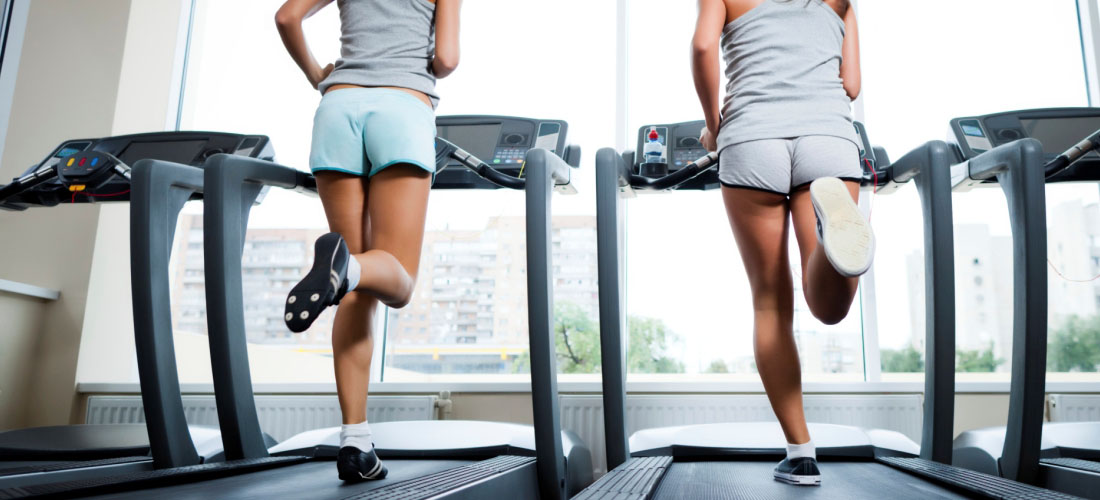When we talk about a gym, treadmill plays the most vital role among all the mean machines you should have in you arena. Well, a treadmill becomes an important part of your workout routine especially when you are focusing on cardio workouts. Buying one might be a heavy toll on your pocket but simple knowledge might help you out with saving at least some bucks.
Spending a part of your income in buying a treadmill is definitely going to render your pocket light. So why not be the best judge and take away the equipment home with confidence. Here’s a brief guide pick your perfect treadmill:
Contents
DO YOUR HOMEWORK
Before you step out to spend your money, some things you should do before buying or choosing a treadmill. First things first are as follows:-
- Do your homework before stepping out. Update your knowledge about treadmills through online means.
- Look out for local dealer either online or offline. Look out for the best deal around you.
- Ask your queries while gathering your knowledge about a treadmill.
- Check your equipment thoroughly while getting it shipped.
WHY A TREADMILL?
Treadmill is extremely effective for cardiovascular fitness along with other cardio workouts such as walking, jogging, running etc. It serves best when you’re aiming to burn calories. However, if you are a competitive runner, a treadmil
l complements your outdoor workouts. It is most suited for those who reside in an urban environment where traffic or air quality may not be supportive or even for those living in extreme cold or hot climates.
DECIDE WHO & WHERE:
WHO WILL BE USING THE TREADMILL?
Decide who will be using it. This is important because a single user that weighs 110 lbs. will need a much different treadmill than a family of 4 that has 2 people over 200 lbs.
For every regular use above 2 people, we recommend you to buy a really good quality treadmill (regular use is defined as 3 or more uses a week). Plus, a 95 lbs old lady who wants to use it 10 minutes a day and 3 days per week is going to need a much different treadmill than a competitive athlete.
WHERE TO PLACE THE TREADMILL?
If you have a tiny space to place it in, you won’t be able to buy a large commercial unit, even if you can afford it. You want to make sure you see the treadmill every day. Remember, out of sight is out of mind. Space may necessitate a treadmill that can fold up. You may even need to limit the weight of a unit if it will rest upstairs. Think through all these factors before you purchase.
WHY ONE SHOULD BUY A TREADMILL?
Many use treadmills to burn off their extra calories for performing weight loss workouts. Using the treadmill help you accelerate the weight loss phenomenon.
Treadmill for runners:
Practice makes a man perfect. The runners who run 5k or longer marathons need to improve their stamina and strength and a treadmill is perfect for practicing longer.
FEATURES TO LOOK FOR:
Motor & Horsepower:
You should choose a treadmill with a motor that is appropriate for how you plan to use it. Larger motors and higher horsepower are a must if you plan on running long distances, since a smaller motor will burn out sooner.
- If you’re a serious runner, consider a treadmill with 1.5 to 2 continuous horsepower.
- If you just plan on doing some light jogging or walking, 1 horsepower is enough for you.
AC motors are mostly used in commercial treadmills and require much more power. The AC motor will also require a dedicated power line.
For a home treadmill, look for a DC motor with a minimum 1 year warranty for a quieter workout. Watch TV or listen to music while working out can help you do longer and better workout.
Walking Belt:
- The more belt surface area you have, the harder the power system has to work to keep it all go. Stay away from overly thick belts.
- Oversize and thick belts are now the rage but most people only need 18” of width and 52” of length.
- Belts that are too thick hold in heat which increases electrical consumption and wears out key components faster. The added weight of the belt also puts more stress on the roller bearings. Additionally, the added heat wears out the belt quicker. Find a belt size on which you are comfortable. However, a thicker belt will give you more cushioning effect.
Belt Deck:
The deck is where your feet will spend all of their time over the life of the treadmill, so it’s important to find one that fits your size and stride and feels comfortable to you. Taller runners and those with longer strides should consider a longer deck of 50 to 60 inches. If you just want to walk on your treadmill look for a minimum belt surface length of 48 inches. These lengths will provide a more comfortable stride for walking or running. If you feel like you’re about to fall off the treadmill to either side when you run or just need a little more breathing room and support, consider a wider belt of around 20 to 22 inches.
Electronic Controls:
Make sure the layout and function of the electronic controls makes relative sense for how you plan to use the machine. It can be frustrating to get home and realize the controls aren’t intuitive or are placed at inconvenient locations on the control panel. If you don’t need a lot of bells and whistles on your treadmill, you should be able to save some money on the electronic features. But if you want multiple workouts, a heart rate monitor and other features, plan to spend more money.
Incline Setting:
- Most treadmills allow you to adjust the incline in increments of 1 percent, and some go as high as a 15-percent grade meaning you get to choose just how steep those imaginary hills are.
- Deciding how much of an incline to use depends on your level of conditioning and the results you seek.
- Beginners need to keep their pace easy and increase the incline by 1 percent every 1 to 2 miles, until they reach their maximum working heart rate.
- Runners may include rolling hills as part of a long training run by increasing the incline every few minutes and then returning to a flat belt.
- Setting your treadmill at a constant incline of between 1 and 3 percent better simulates outdoor conditions.
- When you attempt very steep inclines, decreasing your speed may be necessary to sustain the movement. For sake of precaution, always warm up before attempting inclines by walking or jogging on a flat belt for five to 10 minutes.
- Cool down at an easy pace after an incline workout, and stretch your calves and ankles to ward off soreness and injury.
Noise:
- All treadmills make noise but a reasonably quiet machine generally means less friction and wear on the treadmill. On the flip side, a dead silent treadmill does not necessarily mean that it is perfect.
- Some manufacturers use steel surrounded motor areas and other have used foam to absorb noise, so make sure you know the construction before you judge a treadmill by its noise but generally, the noise a treadmill generates is a good indicator of the machine’s quality. Plus, when you don’t wake up the neighborhood with your morning workouts, it makes for friendlier neighbors.
Warranty And Maintenance:
- Warranties lately have become crazy so don’t get carried away with the lifetime warranties on this or that treadmill. Ultimately, you want to make sure you get a treadmill that you like, is easy for you to operate, and feels good for use. If you don’t like it, you won’t need the warranty anyway because you won’t use the treadmill enough to break it.
- Regarding maintenance, keeping it clean is the golden rule. To help with this, put it on a treadmill mat and periodically clean the entire treadmill.
Wide Screen:
It is important to have a clear view of the screen to monitor your progress while running on treadmill. It should be wide enough to get the glance OF the progress with a quick view.
Shock Absorption:
When you are almost in a “running” state on your treadmill, make sure that you don’t feel too spongy on the surface. If you feel so then don’t take a second thought to reject that treadmill. The “softness” of the surface may lead to various knee injuries. Also, you don’t want it to be too hard. Go for a treadmill which is a blend of soft and hard surface.
Price:
You get what you pay for in a treadmill but make sure you get the best in your price range. So, shortlist and jot down the features you are looking for to have the best treadmill at your place.
That’s all folks. Have a safe tread on your new treadmill.






Comments are off this post!